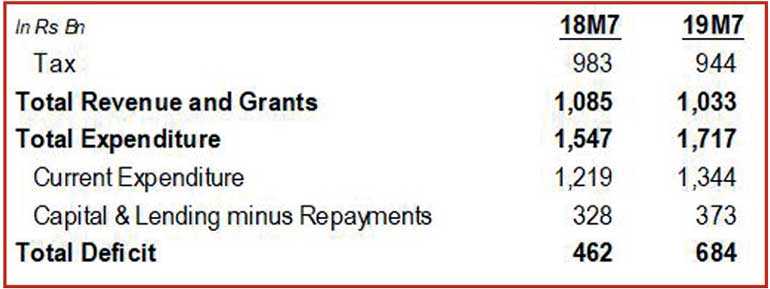Wednesday Apr 23, 2025
Wednesday Apr 23, 2025
Thursday, 17 October 2019 00:50 - - {{hitsCtrl.values.hits}}

The time for promises has started. Everybody utters how they will make Sri Lanka a better place. But have they learnt anything from the previous election manifestos? Has the public learnt from the great difference between the election manifesto and the real performance during the tenure? 
In-depth effort should be put into election manifestos
If the people have realised it, they should be demanding a well-thought-out, realistic set of proposals which can be implemented over five years. Clearly a lot of in-depth work should have gone into it to come up with such a plan. Our experience shows that basic, vague manifestos take a long time to be put into a plan once in power. It just underlines the fact that it requires a lot of effort to go in to detail of every aspect that should be implemented in a plan for five years.
If the elected spends a year or two doing that, valuable time is lost and there wouldn’t be sufficient time to implement it, bearing in mind the next election would be round the corner. Especially with coalition-type set-ups that we have, there will be natural resistance within the administration which makes the planning and implementation even more difficult and time consuming if it’s done after coming into power. If we could learn anything from the recent past, it should be just that.
Promises versus reality
Apart from the bashing of the opponents (which is an absolute turn off, as people should vote based on one’s good rather than the opponent’s bad), what we hear are promises. I will give this and I will do that. But do they say how much of resources are needed for that and how that would be sourced?
It’s worthwhile seeing the Government’s revenue and expenditure position to shed some light into the matter.
The two tables show the reality. Government expenditure was higher than its revenue by Rs. 733 b and Rs. 761 b in 2017 and 2018 respectively. The budget was to reduce this deficit to Rs. 685 b in 2019. The actual data up to July indicate that the Government expenditure is already higher than the revenue by Rs. 684 b. With five more months to go, the budget deficit has already reached the budgeted amount for the whole year.
This is naturally financed by borrowings, which increases the debt burden and so on.

Need to connect the two
So the question arises, in this state of affairs, how much more expenditure is these presidential candidates talking about in terms of their grand promises? And how do they propose to finance it?
I believe that fiscal deficit is not Sri Lanka’s biggest problem. The more serious problems are the low growth and deficit in the external current account (importing a lot more than the foreign currency we earn). I have attempted to reason out this rationale in detail in my recent book ‘A Simple Plan for Sri Lanka’.
So it is fine if the candidates do expand the budget deficit, if it solves the more serious problems. But that expansion should happen for measures which would result in a long term, sustainable, high growth economy. That high growth in the medium-long term should be achieved through an expansion in foreign exchange earning industries. It is that link that these presidential candidates should clearly point out.
It can be done
If Sri Lanka manages to take that path, it is likely to attract investors in the medium term which would ease the foreign debt burden within the first three years of the new president. If the next president could provide a sustainable high growth economy while simultaneously providing a solution to the foreign debt problem, that would be an exceptional effort over the next five years.
It really doesn’t matter what happens with the fiscal deficit (Government revenue and expenditure), rupee debt, inflation or exchange rate or any other sundry problem. All those could be addressed once the above two crucial problems are addressed in a sustainable manner.
Which candidate would do that?
The question is, which candidate would propose such a realistic plan which clearly prioritises the objectives, while also clearly pointing out the opportunity costs (or what he wouldn’t be able to achieve over the five years).
I’m keen to look at the election manifestos of the two main candidates with a lot of hope.
Discover Kapruka, the leading online shopping platform in Sri Lanka, where you can conveniently send Gifts and Flowers to your loved ones for any event including Valentine ’s Day. Explore a wide range of popular Shopping Categories on Kapruka, including Toys, Groceries, Electronics, Birthday Cakes, Fruits, Chocolates, Flower Bouquets, Clothing, Watches, Lingerie, Gift Sets and Jewellery. Also if you’re interested in selling with Kapruka, Partner Central by Kapruka is the best solution to start with. Moreover, through Kapruka Global Shop, you can also enjoy the convenience of purchasing products from renowned platforms like Amazon and eBay and have them delivered to Sri Lanka.
Discover Kapruka, the leading online shopping platform in Sri Lanka, where you can conveniently send Gifts and Flowers to your loved ones for any event including Valentine ’s Day. Explore a wide range of popular Shopping Categories on Kapruka, including Toys, Groceries, Electronics, Birthday Cakes, Fruits, Chocolates, Flower Bouquets, Clothing, Watches, Lingerie, Gift Sets and Jewellery. Also if you’re interested in selling with Kapruka, Partner Central by Kapruka is the best solution to start with. Moreover, through Kapruka Global Shop, you can also enjoy the convenience of purchasing products from renowned platforms like Amazon and eBay and have them delivered to Sri Lanka.